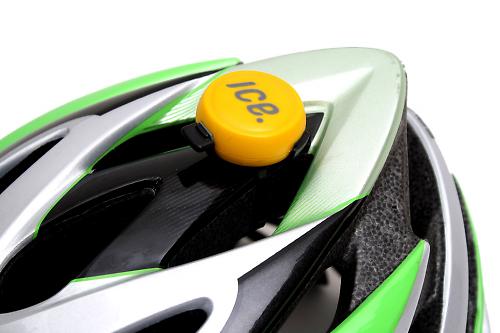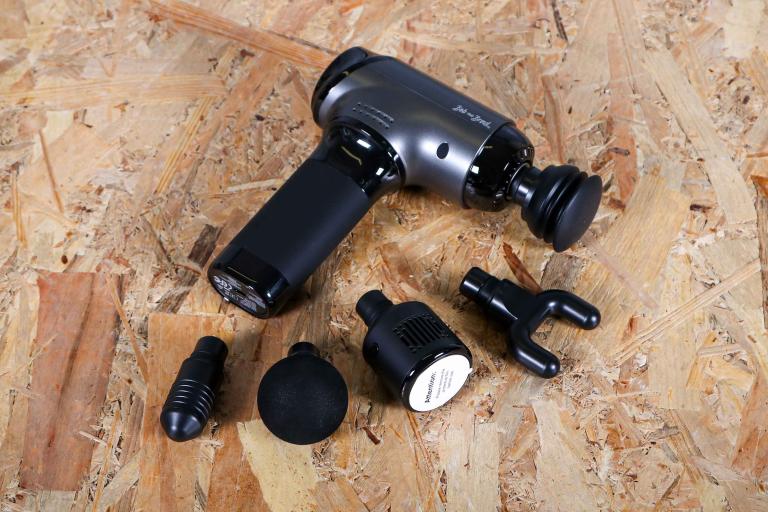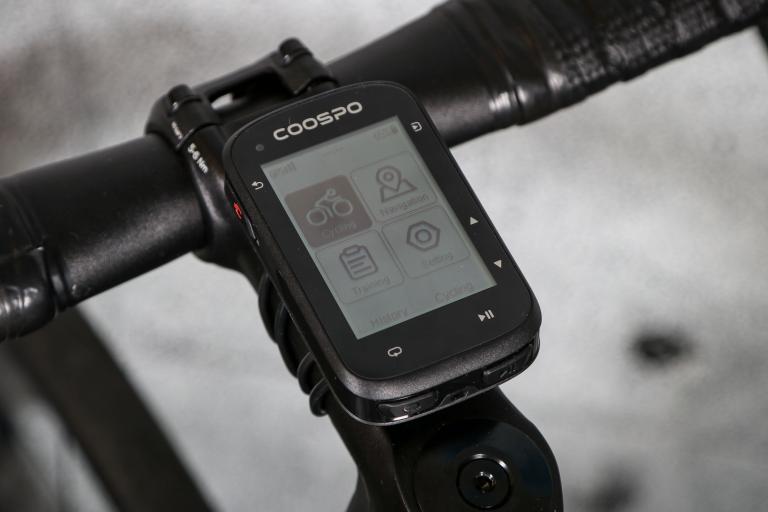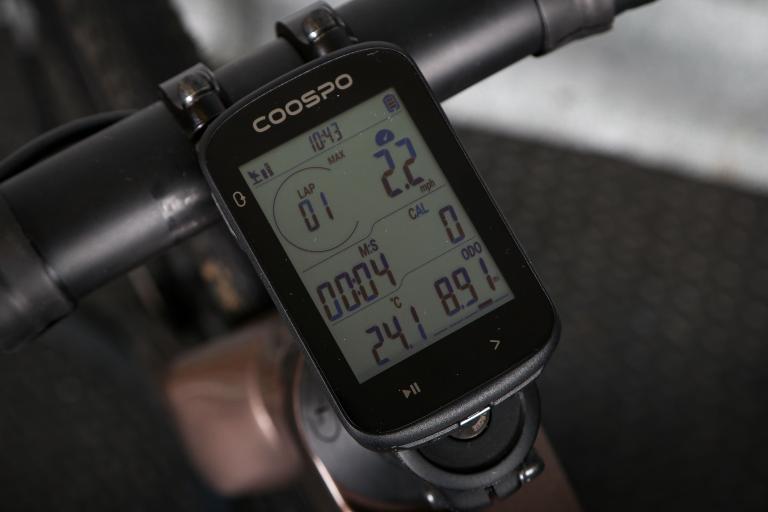- News
- Reviews
- Bikes
- Accessories
- Accessories - misc
- Computer mounts
- Bags
- Bar ends
- Bike bags & cases
- Bottle cages
- Bottles
- Cameras
- Car racks
- Child seats
- Computers
- Glasses
- GPS units
- Helmets
- Lights - front
- Lights - rear
- Lights - sets
- Locks
- Mirrors
- Mudguards
- Racks
- Pumps & CO2 inflators
- Puncture kits
- Reflectives
- Smart watches
- Stands and racks
- Trailers
- Clothing
- Components
- Bar tape & grips
- Bottom brackets
- Brake & gear cables
- Brake & STI levers
- Brake pads & spares
- Brakes
- Cassettes & freewheels
- Chains
- Chainsets & chainrings
- Derailleurs - front
- Derailleurs - rear
- Forks
- Gear levers & shifters
- Groupsets
- Handlebars & extensions
- Headsets
- Hubs
- Inner tubes
- Pedals
- Quick releases & skewers
- Saddles
- Seatposts
- Stems
- Wheels
- Tyres
- Health, fitness and nutrition
- Tools and workshop
- Miscellaneous
- Tubeless valves
- Buyers Guides
- Features
- Forum
- Recommends
- Podcast
review
£110.63
VERDICT:
A smart little device and all round package that makes those dark winter rides a little bit safer; easy set up too
Weight:
40g
Contact:
www.icedot.org
At road.cc every product is thoroughly tested for as long as it takes to get a proper insight into how well it works. Our reviewers are experienced cyclists that we trust to be objective. While we strive to ensure that opinions expressed are backed up by facts, reviews are by their nature an informed opinion, not a definitive verdict. We don't intentionally try to break anything (except locks) but we do try to look for weak points in any design. The overall score is not just an average of the other scores: it reflects both a product's function and value – with value determined by how a product compares with items of similar spec, quality, and price.
What the road.cc scores meanGood scores are more common than bad, because fortunately good products are more common than bad.
- Exceptional
- Excellent
- Very Good
- Good
- Quite good
- Average
- Not so good
- Poor
- Bad
- Appalling
Crashing when you're riding on your own can be serious especially in the cold and dark of winter. ICEdot's Crash Sensor can let a contact know within a minute should the worse happen and they can even direct the emergency services to you from their armchair.
Set Up
Getting the ICEdot up and running is really simple. By registering the sensor on their website you create an account which is where you put in your details and those of your emergency contacts. I put my wife's details in and selected SMS for the type of alert though you can also choose email or a phone call. Within a minute she was sent an SMS to confirm she was happy to be a contact and that was it, job done. The whole thing took about ten minutes.

Next up you need the app for the sensor to talk to and for that you'll need a smartphone (iPhone 4s and above or an Android running 4.3 or later, 4.4.2 if you're using a Samsung) once installed and Bluetooth turned on you're ready to go.
Giving the Crash Sensor a little shake wakes it up for the Bluetooth to pair and once you tap 'GO' you're live.
It works in practice
A new addition to the ICEdot is a manual alarm which you can send by selecting it in the app so this was the first test. As soon as I'd confirmed to send the alert my wife received a text with the message I had set up on my profile: my coordinates and an internet link to a map showing exactly where I was. Pretty impressive stuff considering I was sitting at the dining room table.

Next I had a little play with throwing the helmet in the garden. As soon as the helmet hit the ground the 'Impact Detected' page shows on the phone with a countdown to when it will send the alert. This is customisable from 15 seconds to 2 minutes and gives you chance to cancel in a false alarm. A swipe of the slider on your phone screen resets everything. You can set an audible alert to letting you know the impact has been detected.
Originally the ICEdot Crash Sensor would only activate after an impact but it now offers a live tracking option too. You need to provide your emergency contact with your personal number. They can then either text ICEdot and receive your last known coordinates or they can log into your account and use the map on there. This is useful if you are late but haven't sent an alert, if this is due to no coverage the map will show your last known point.
On the road testing has shown a consistent location fix every time delivered to the wife's phone instantly and although I haven't had to use it for real yet I'd be confident that if needed help it could find me pretty damn quickly.
The techy stuff
The reason you attach the sensor to the helmet is so that it can copy the movement of your head as you go about your normal ride. It does this by the use of a gyroscope and a three-axis accelerometer to measure the forces as your head moves. The reason it uses both is so that it can measure the forces in all directions. For instance an initial impact might not be that heavy but a secondary could be much higher in another plane, a whiplash effect. Either movement might not be enough to trigger the impact alarm but the two combined (taking into account speed and direction) could be; it's up to the algorithm to determine this.
If the algorithm determines that the forces are high enough that they could cause any type of brain trauma the app is triggered into connecting with the ICEdot servers and the notification is sent to your emergency contact, once the countdown has reached zero.
The sensor uses Bluetooth 4.0 Low Energy (BLE) and I certainly haven't noticed any effect on the battery usage on my iPhone 4s. ICEdot quote a BLE range of 10m so you shouldn't have any issues with your phone being in a jersey pocket.
The lithium polymer battery fully charges in 4 hours and gives a claimed 20 hours of operating time which I have had no trouble reaching and regularly surpassing especially in the warm weather of the last few weeks. There isn't any battery level indication on the sensor itself its all provided by the app.
Getting the sensor wet hasn't been an issue either which is impressive considering some of the downpours I've ridden through. The electronics are sealed and if water does get inside the casing all you need to do is let it dry out before recharging.
The helmet mount must be fitted securely with cable ties to back up the sticky pad. If it can move amount or bounce as you ride as this could create a false alert, you're going to look a bit of a prat when a fleet of ambulances are driving towards you with blue lights flashing because a panicked partner has phoned 999.
Minor issues
There is really only one problem with the ICEdot: riding somewhere where there is no phone coverage. There are a few places around where I ride that have none but thanks to the tracking option your location still be narrowed down to a section of road. It would be a bit trickier if you were in the middle of the woods, but with a bit of detective work you could be found just not as quickly.
While the app on iOS 8 works perfectly ICEdot do have this statement on their website for Android users: "There is a catch here, people use the term Android like it's a singular phone when in fact, it's hundreds of phones and each phone manufacturer makes their own customizations to the system, some of which can cause conflicts. The app we released is tested and fully supported on Nexus phones. Google makes the Nexus and they make Android – so its the most 'pure' version of the system. The app is in public beta on all other devices running Android 4.3 or later. Samsung devices require 4.4.2."
I did a bit of Googling though and couldn't find any real issues so I don't think this will be a problem.
In conclusion
For £140 I think the ICEdot Crash Sensor is brilliant for solo riders and well worth the investment for peace of mind. For that price you get a year's subscription (following years are £5) a wrist band and a pack of stickers with your PIN number on. Should you be found by a non-emergency contact they can text this PIN to the shown number to receive medical details and activate an alert. If you have any medical conditions this is a great way for the emergency services to know what they are dealing with.
Its well made and works faultlessly plus the battery is constantly putting out good run times. Apart from the possibility of lack of coverage I can't really see a fault with the whole concept or its execution.
Verdict
A smart little device and all round package that makes those dark winter rides a little bit safer; easy set up too
road.cc test report
Make and model: ICEdot Crash Sensor and Band
Size tested: n/a
Tell us what the product is for, and who it's aimed at. What do the manufacturers say about it? How does that compare to your own feelings about it?
The ICEdot Crash Sensor is designed for situations where a crash which could result in brain injury (unconciousness/concussion) and the user is unable to call for help. By using GPS through your phone it can provide your emergency contacts with location details of where you are. I think it's a brilliant and simple to use device that puts my wife's mind at rest while I'm out on the bike.
Tell us some more about the technical aspects of the product?
Phone types currently supported:
iPhone 4S or later (BLE 4.0 Required)
Android phones running 4.3 or later with BLE support.
All Samsung phones require 4.4.2
Includes:
1 ICEdot Crash Sensor
1 helmet mounting clip (adheres or zip ties to helmet)
1 USB to Micro USB charging cable
1 Yr Premium ICEdot Membership
Operating temperature: 0°F to 122°F (-18°C to 50°C)
Water immersion: up to 1 meter for 30 minutes
Communications: Bluetooth 4.0 Low Energy (BLE)
BLE range: up to 30 feet (10 meters)
Battery technology: Rechargeable Lithium-polymer
Operating time: Approx. 20 hours
Standby time: Approx. 30 days
Charging power USB 5 volts (USB micro-B connector)
Charging time: Approx. 4 hours
Rate the product for quality of construction:
8/10
The case feels a little on the cheap plasticy side but its whats inside thats important and that all works without issue.
Rate the product for performance:
10/10
Brilliant, in practice texts were delivered instantly with accurate location fixes.
Rate the product for durability:
8/10
Everything is fine at the moment but I'll be watching bracket wear as its only thin plastic. It could become brittle in really cold weather
Rate the product for weight, if applicable:
10/10
You don't even know it's there.
Rate the product for value:
7/10
I think that the £140 is an acceptable price to pay for the peace of mind and the performance but it is just $119 in the US.
Tell us how the product performed overall when used for its designed purpose
Brilliantly, no false alerts and precise location fixes every time.
Tell us what you particularly liked about the product
The simplicity of use.
Tell us what you particularly disliked about the product
Its not going to be great for those with weak network coverage plus I think only one helmet mount is a bit stingy.
Did you enjoy using the product? Yes.
Would you consider buying the product? Yes.
Would you recommend the product to a friend? Yes.
Anything further to say about the product in conclusion?
It's a great product and does exactly what it says on the tin. The UK price does seem steep though compared to the US one and it could do with at least two mounts in the box (or am I the only one with more than one helmet?) That and the fact that it relies on network coverage means it doesn't quite get afull marks, it's nearly there though.
About the tester
Age: 36 Height: 180cm Weight: 76kg
I usually ride: Kinesis T2 My best bike is: Kinesis Aithien
I've been riding for: 10-20 years I ride: Every day I would class myself as: Expert
I regularly do the following types of riding: time trialling, commuting, club rides, sportives, fixed/singlespeed,
Since writing his first bike review for road.cc back in early 2009 senior product reviewer Stu has tested more than a thousand pieces of kit, and hundreds of bikes.
With an HND in mechanical engineering and previous roles as a CNC programmer/machinist, draughtsman and development engineer (working in new product design) Stu understands what it takes to bring a product to market. A mix of that knowledge combined with his love of road and gravel cycling puts him in the ideal position to put the latest kit through its paces.
He first made the switch to road cycling in 1999, primarily for fitness, but it didn’t take long for his competitive side to take over which led to around ten years as a time triallist and some pretty decent results. These days though riding is more about escapism, keeping the weight off and just enjoying the fact that he gets to ride the latest technology as part of his day job.
Latest Comments
- chrisonabike 1 sec ago
Y'know - I think they're on to something: everything is shrinking around motor vehicles! Have you tried to get a modern mini in a garage that...
- levestane 18 min 46 sec ago
In Britain we are let down by our education system in terms of numerical skills,...
- mdavidford 29 min 48 sec ago
Guess that depends on your definition of 'works'.
- PenLaw 30 min 58 sec ago
Right wing politicians are working for big oil. They chase the dollar representing only themselves,
- teckert 6 hours 45 min ago
Well it appears Velogames isn't overly good at getting races up too quick either. ...
- hawkinspeter 10 hours 11 min ago
Can't that be resolved with different gearing though? (Smaller chainring)
- David9694 11 hours 3 min ago
1981 Raleigh brochure on EBay - a missing link in the catalogues available on line. Bidding starts at £35. ...
- S.E. 12 hours 46 min ago
It's probably in Romania by now, or Poland, but a picture would certainly help, size too?
- S.E. 12 hours 55 min ago
Sounds like spam... which bike was used for the kit, please at least post pictures with the end result.







Add new comment
20 comments
Hummm I'd be very tempted but when I crashed recently my head hit first, and then (from injuries I guessing) I flipped onto my back and other ways resulting in gels and phone in jersey pocket breaking. In this situation it doesn't sound like it'd make much difference. Interesting review and something to think on (and annual subscirption should be applauded for not being ridiculusly priced )
)
To be fair, it's going to be very difficult to design a tech-based solution that's not vunerable to crash dammage to a greater or lesser degree. If the device was self-contained that might help but that would involve a separate SIM card and the associated cost.
I agree. My point is that modern smart phones aren't designed for any impact. How many of us have smart phones without protective cases? They're a very weak link in the chain. For me, the answer is some sort of JCB toughphone that would survive a crash (and the kids playing games on it)!
This is the kind of upgrade that takes little persuasion with the missus. Hey, Chris Zenthoefer, here's an idea, increase the price until you can include a 'free' bike! Maybe that would work...
The reason we don't send an sms directly through your phone is that iOS requires any message sent directly from your phone to be physically acknowledged by you, the sender. So in case you need help from our device we could queue up a message but wouldn't be able to deliver it as you'd have to hit send.
So instead we do contact our servers and send messages on your behalf. If the protocols change in the future, we will adjust accordingly.
Our system also allows your emergency contacts to track you by sending a simple text message to our servers and we're working on some cool new features for the app to be announced at ISPO in February.
Safe riding,
Chris
Interesting bit of kit, and there's certainly potential for devolopment into something really great.
I see a couple of flaws that I'd like to see worked out though. The reliance on the mobile data network is the first, as the locations where it is most likely to be of the most use (away from population centres and high-traffic routes) are precisely the places where mobile service is likely to be the most limited. Secondly I'd like to see some buy-in from the emergency services such that they can be notified directly rather than relying on a friend or relative who might be unavailable or uncontactable for a whole host of reasons.
You're better off calling 112 from a mobile as opposed to 999. When you call 112 the signal is triangulated and the GPS coordinates are sent to the emergency services making it easier to locate the caller.
Who on earth told you that?
112 was a number decided upon by European carriers as an alternative to the normal emergency number which may or may not vary nation to nation allowing people to dial even if unsure of the exact emergency number, it still just dials through to emergency services on the same line and uses the same towers, a trace down to your exact location will not be carried out unless the emergency services specifically request it to be done
The myths about 112 continue, mostly spread by Facebook
If in trouble ring 999, this is the exact advice given by the emergency services, 112 is not a magic way around having no signal either
I'm glad you saw fit to to question, albeit in a slightly pompous manner. I'm not a member of Facebook so am unable to comment on myths that maybe be doing the rounds. However, I was recommended to use 112 when using a mobile by an ex-copper and several times by medical trainers during a variety of first aid related courses. Personally I thought these professionals would have had excellent credentials. Seems they were all wrong. In the UK 112 and 999 do exactly the same thing.
http://www.mountainsafety.co.uk/EP-999-or-112-Which-is-Best.aspx
Thanks for making me question.
All mobile phones can access the 999 service on any network, even if the phone is locked to a single provider.
Perhaps this device would be more useful if it made an automated 999 call with the phone's voice giving GPS co-ordinates to the operator.
999 service probably didn't like the idea of this from worries about false alarms (people knocking their helmet off a bench they're sat on having a snack etc). Not sure whether I'd rather my wife got a text saying 'an ambulance has been called to location X' or 'your husband has fallen off and hasn't moved for two minutes'.
None the less, from October that's what all new cars will be doing if they are involved in a crash.
Is there not an emergency channel that can be used for this sort of thing?
This would have been a godsend to me several years back. I was riding alone at some jumps fell off and was knocked unconscious, I came to at some point and had evacuate myself back to my car and get myself to hospital. Maybe with this device I'd have been found, maybe not...
Surely it's a safety device you hope to never have to use or rely upon, but if the worst should happen and you are out cold at least you'd have a better chance of being found. If I was ever back in that same situation I'd rather have this with some faults as opposed to nothing at all.
Doesn't make riding any safer- is doesn't at all reduce the likelihood or even severity of a crash.
Useless to me because I have a Garmin 810 connected to my phone via bluetooth and one can't connect multiple devices simultaneously via bluetooth.
Your Garmin can't connect to multiple phones simultaneously, but your phone can connect to multiple bluetooth devices at once. In fact in the most recent bluetooth revision, devices such as heart rate monitors will now be able to connect to multiple clients at the same time.
According to the manual:
So it looks like you only need a basic 2g signal for it to work, no data.
EDIT: Maybe not. Further down it says:
Which is a bit vague, because the phone doesn't need data to send an SMS with co-ords to a contact (though it would an email).
Clarification from the vendors required!
Looks like it, It's a flaw in the design as you are more likely to have a signal to send a SMS than data connectivity.
"the app is triggered into connecting with the ICEdot servers and the notification is sent to your emergency contact"
So does this mean one must have a data plan for the device to work? The SMS is not sent directly out from the phone?